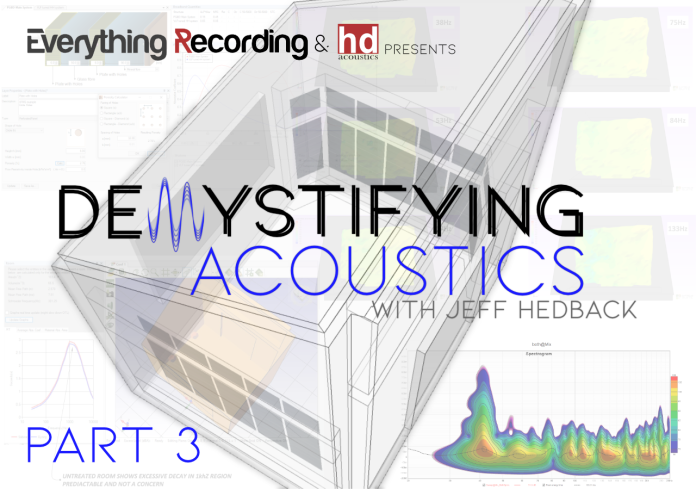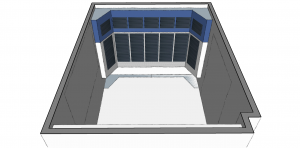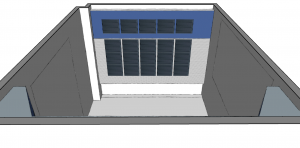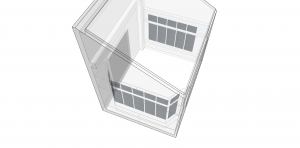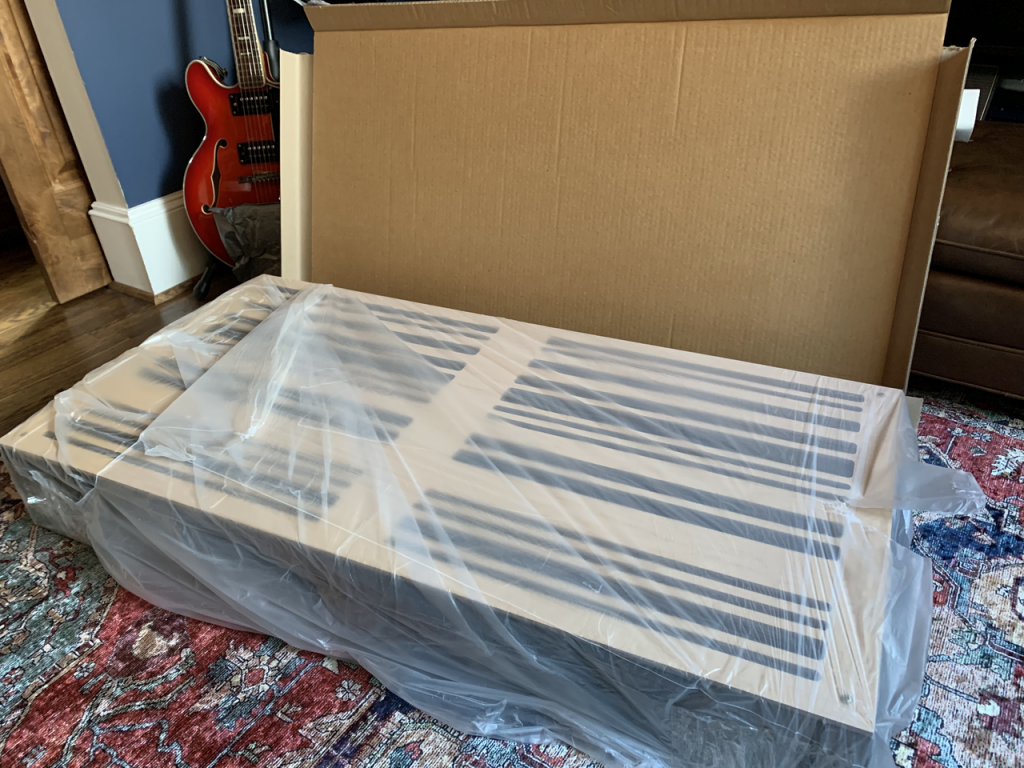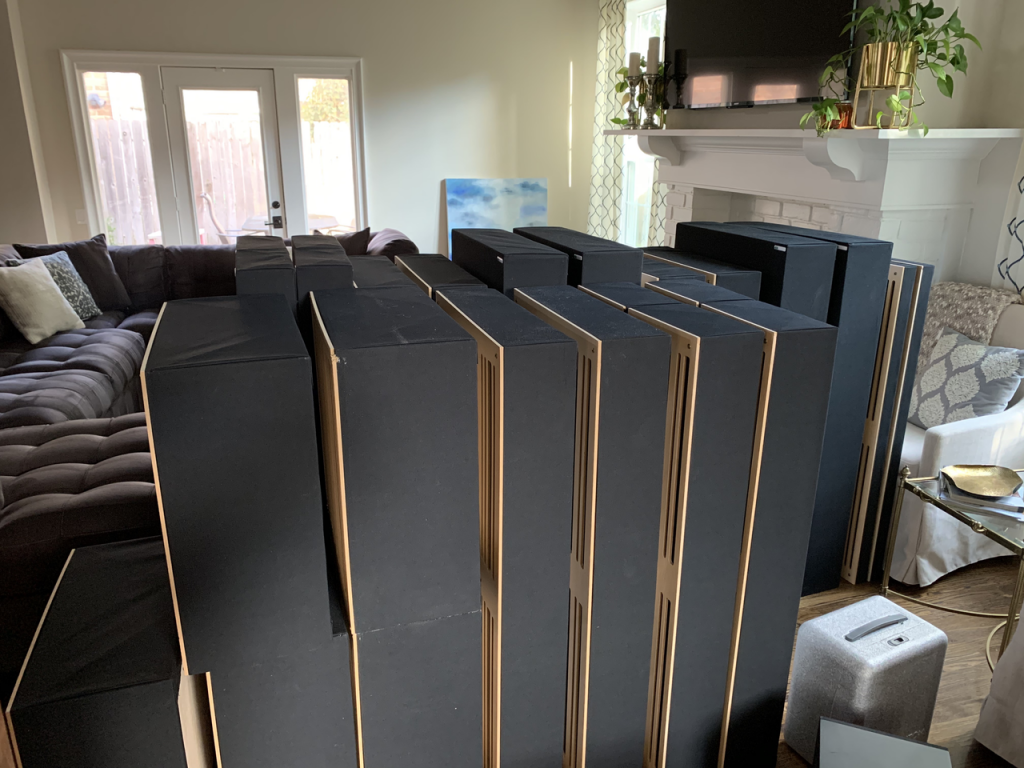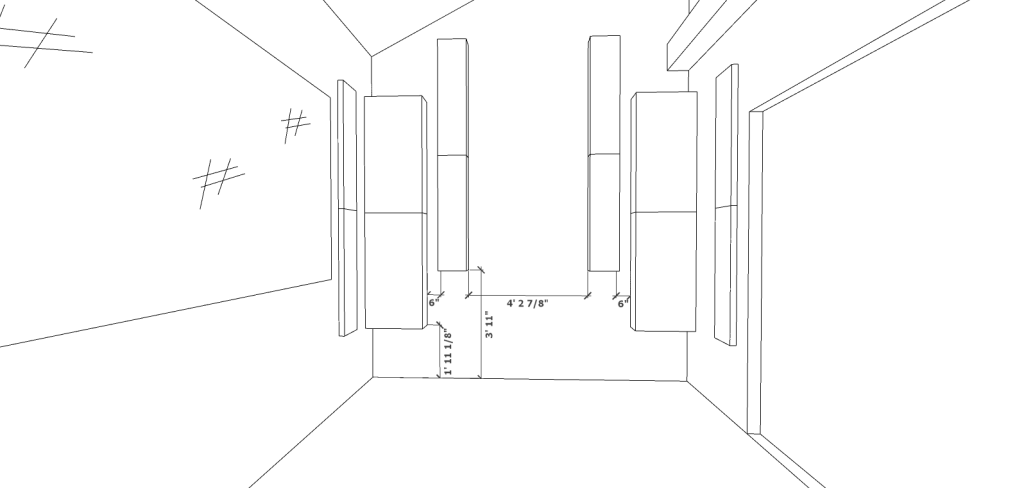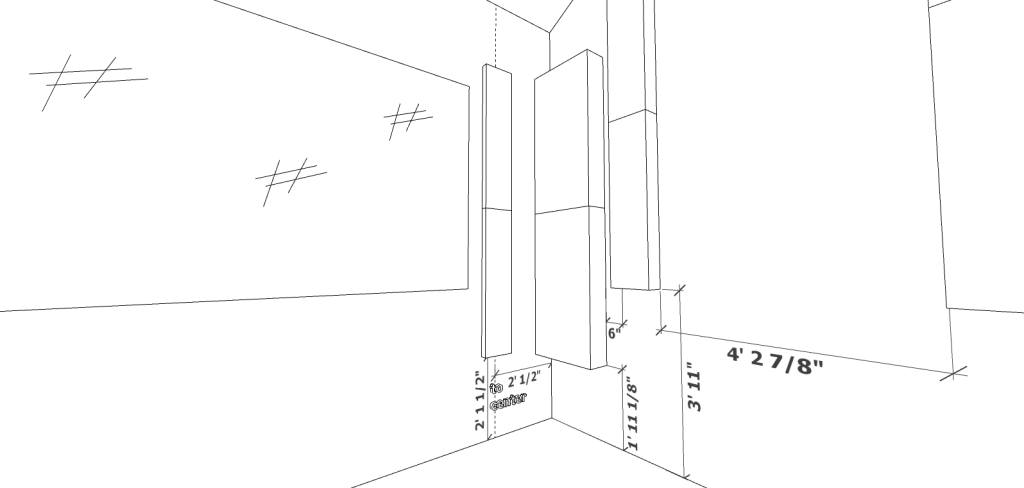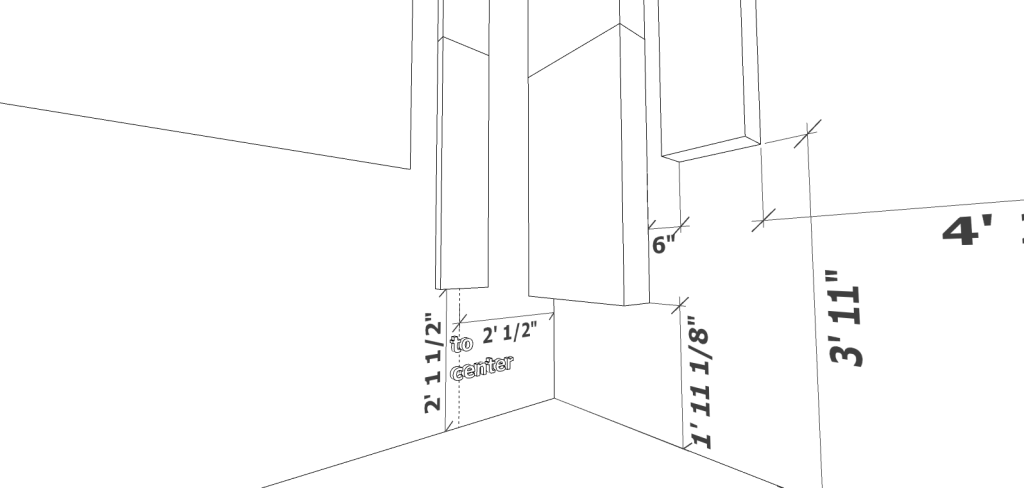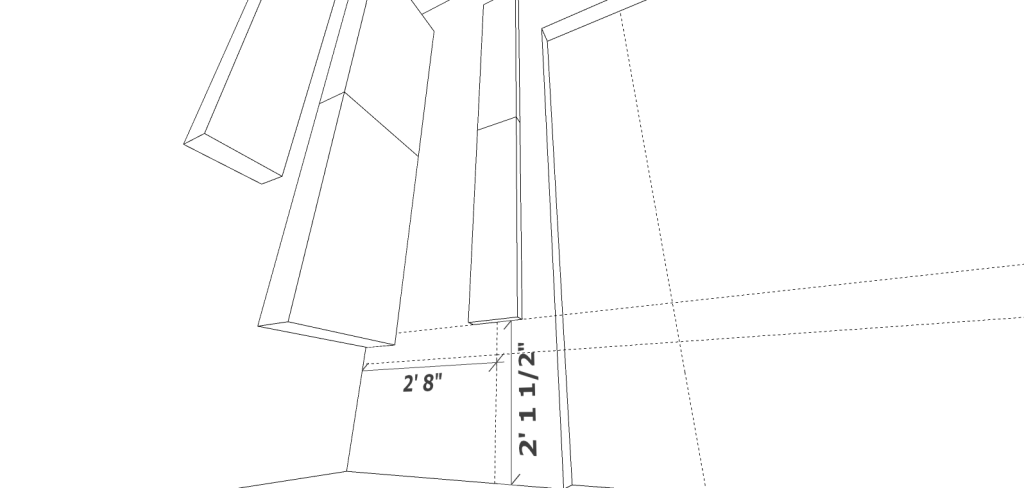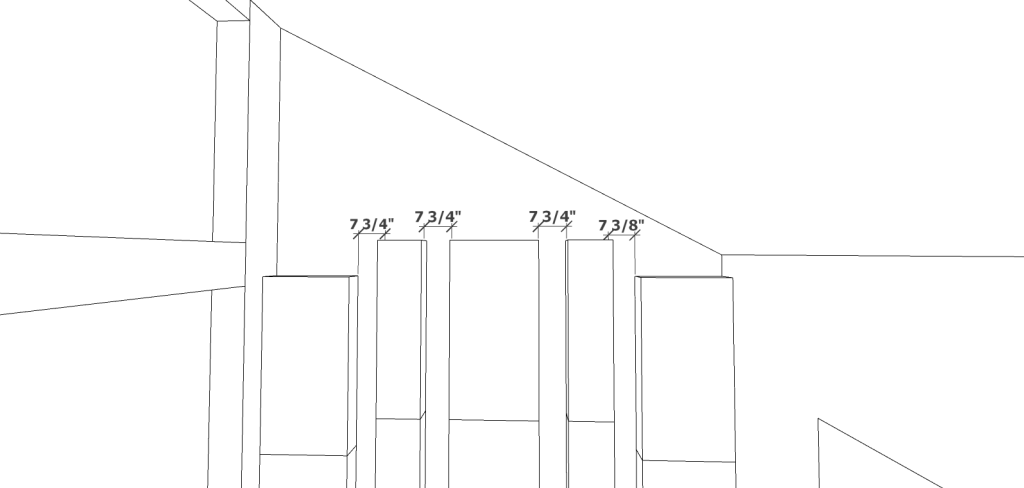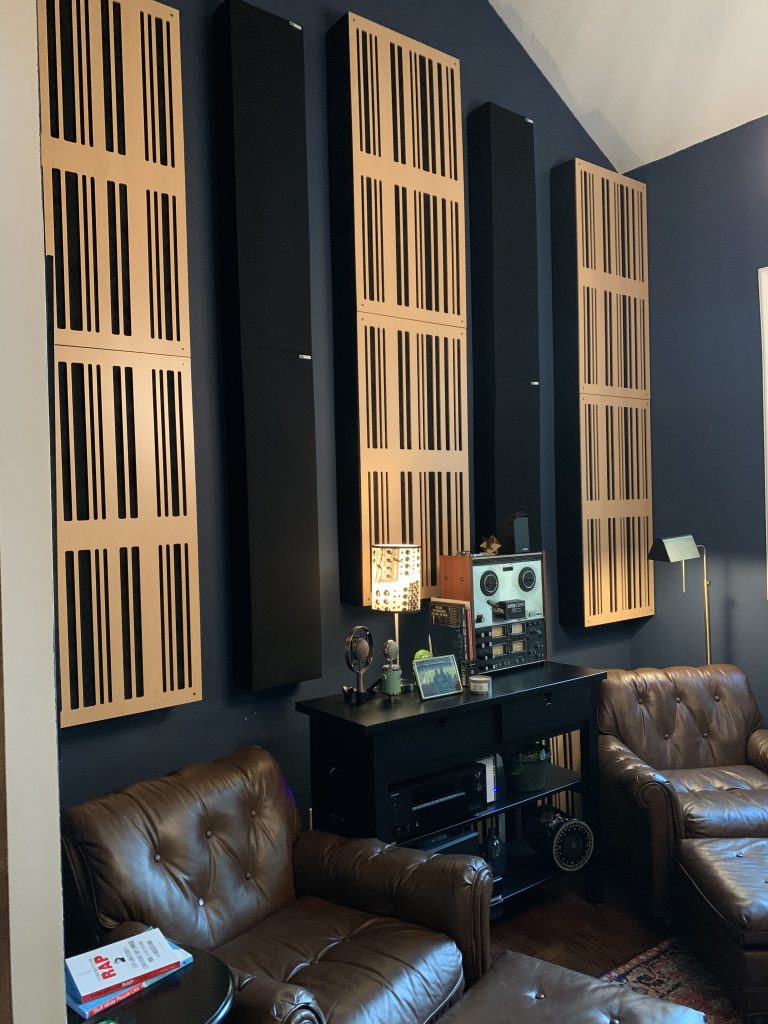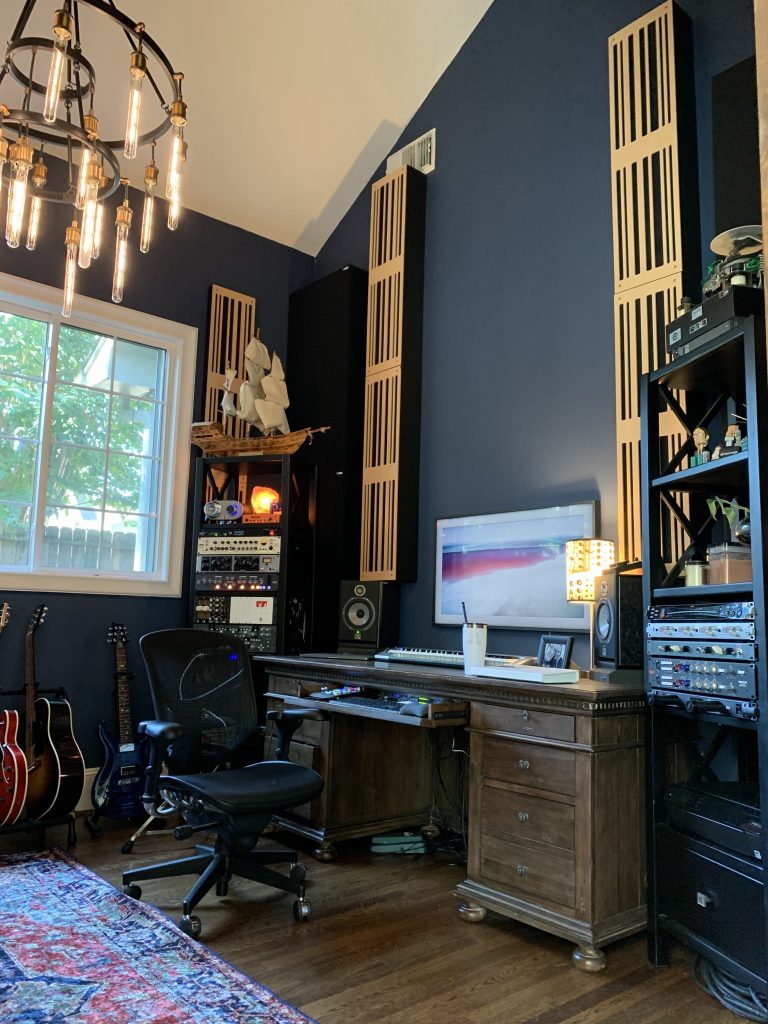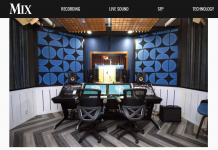This is Part 3 of a 4-part series. To start from the beginning, visit Part 1.
When we left off in Part 2, we built the space, determined the mix position, and measured the room for proper treatment. We also ended with a bit of a cliffhanger on how we were going to treat the room. We had an initial plan but circled back due to a few factors. In part 3, we look at the alternate option and how we ultimately treated the room.
Decisions, Decisions
Let’s take a look at where we left off. We had a custom modular approach that needed to be built from scratch.
While we had the resources to build this extremely classy and slightly-invasive treatment plan, I realized this would take a great deal of time and effort. We also wanted to make sure this series serves you, the reader. Many of you don’t have the tools, time, or desire to build your own treatment. I’ll be honest with you as well – while the renders look incredible, I’m not completely sure my final product would look that good. We’ve all seen Pinterest fails, and I wouldn’t want to be stuck with a pricey build that doesn’t look professional. So we went another route.
Option B
Because Jeff works with projects big and small, he has various solutions for each. Since I was worried about my hand-built final result, he suggested an “off-the-shelf but custom” approach. In this scenario, Jeff still uses the previous room’s analysis, but instead of giving you the blueprints to build your own treatment, he utilizes manufactured products.
Now, at this point, you may be scratching your head, thinking, “almost every sound treatment company offers this approach for free.” While you’re correct on this observation, these companies have an agenda: to sell their solutions. Although said company’s products may be the best in the business, they may not make exactly what you need to treat areas of your room properly. Not being tied to one company, Jeff can draw from different “brushes” and create a unique plan for you.
Enter GIK Acoustics
For my specific room, we still had the “decorative” condition the wife set early on – “this needs to look more like a study and less like a studio.” Jeff suggested we lean primarily on GIK Acoustics, a company you will see on various projects on his website. After looking through their options, it was a no-brainer to use them – they offer decorative panels that blend into the room more than traditional panels. I also wanted to keep the treatment options within the financial grasp of you, the reader. GIK offers Pro Level, properly tested options that won’t break the bank.
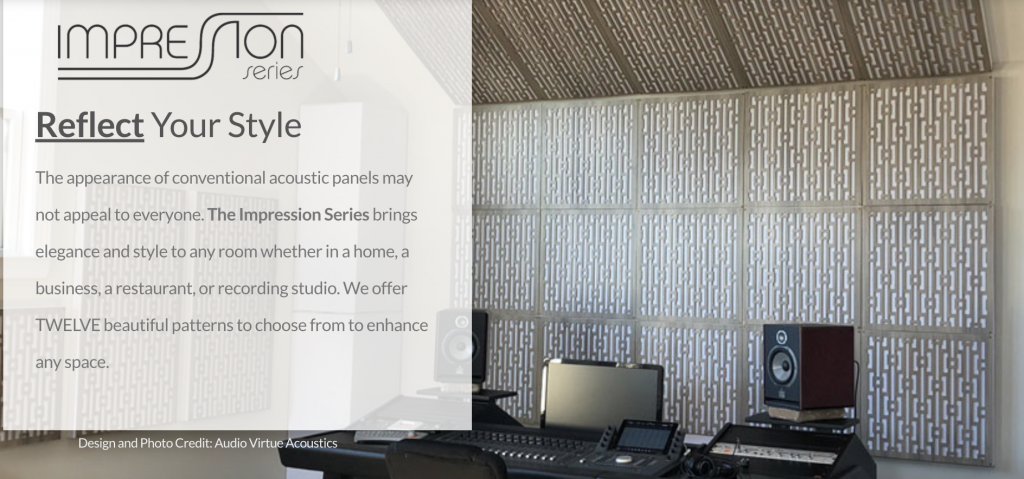
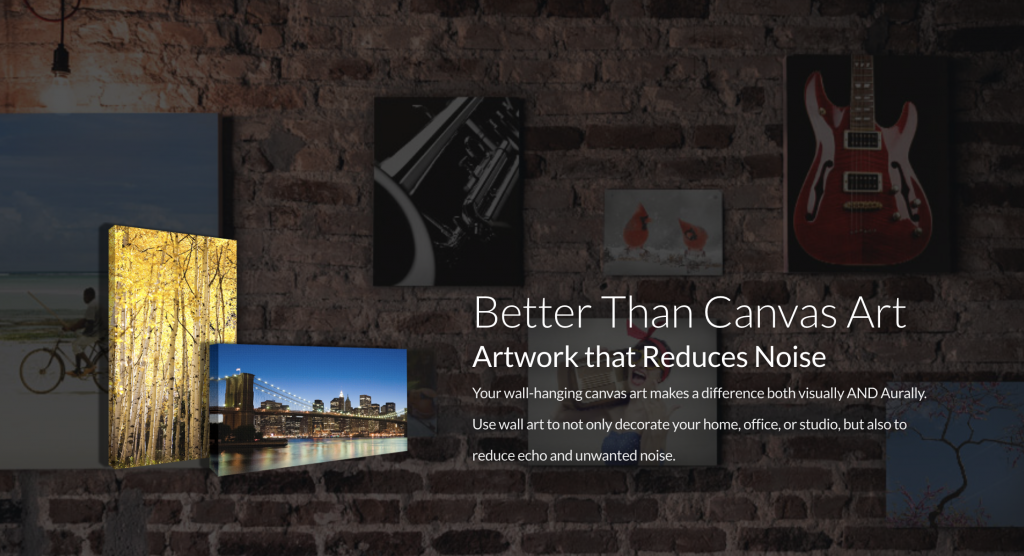
And We’re Off
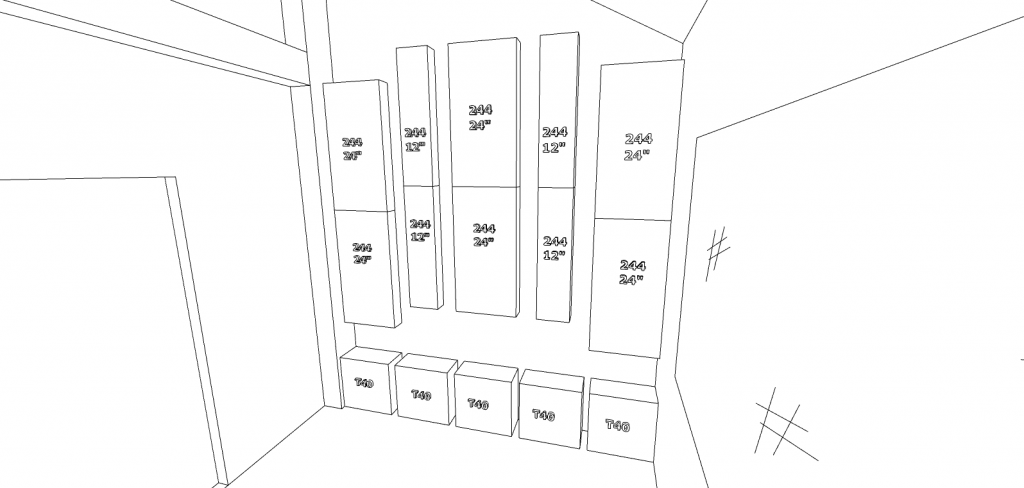
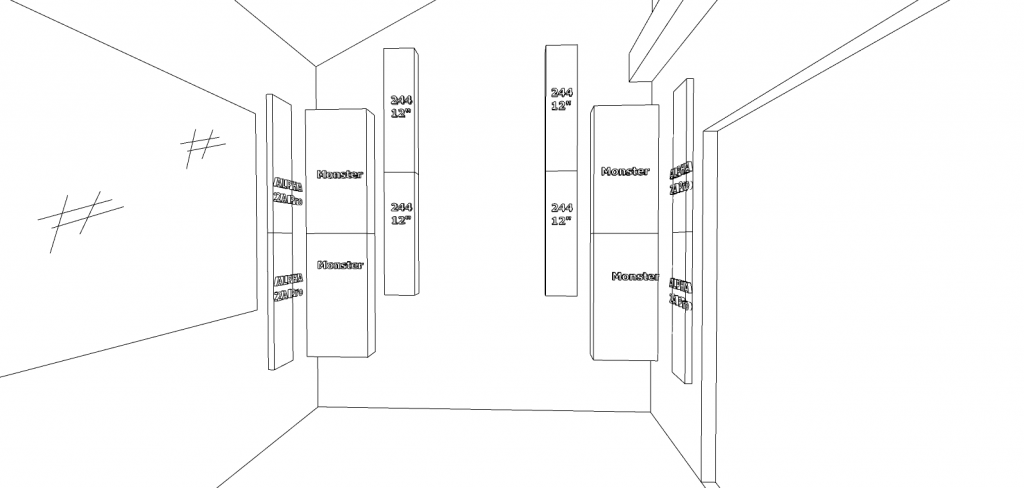
With Jeff being familiar with GIK products, He picked from various lines of products to fix the quirks my room had. Trust me. We had a lot of curveballs in the form of existing furniture and ergonomics. Nevertheless, he mapped out the treatment plan and sent me over to GIK with my shopping list.
Kill the Waves, Not the Room
The lack of ceiling treatment meant we had quite a chore on our hands with dispersing sound. Taming these errant sound waves would require a little extra firepower. So Jeff decided that nearly all panels would incorporate scatter plates. This serves twofold. First, it gives the entire back wall the means to deflect sound waves from the mix position. Second, it maintains a lively room sound. Too often, there is a misconception that you need a “dead” room to mix. This couldn’t be further from the truth. A lifeless room where the sound sort of drops straight to the ground can cause ear fatigue quicker, resulting in more of those “mix headaches” we all get at times. Plus, a controlled room with more natural decay works great for tracking instruments.
The Waiting Game
With my shopping list to Gus at GIK Acoustics, at this point, all you can do is sit, staring out of the front door window. Coincidentally, the pandemic had caused a scarcity of sound treatment, but not for the reason you’d think. This didn’t have to do with shipping delays or lack of materials – it was due to, of all things, Zoom. Many professionals quickly realized their home offices were horrid places for audio, resulting in a cavernous wash of barely audible conversations. So, GIK was cranking out panels, even for non-audio professionals.
Then one afternoon, I got an alert my order had arrived and pulled up to a barricaded front porch.

GIK really goes out of its way to protect the panels as best it can. The packaging is pretty robust, with multiple layers of cardboard, plastic, and tape. Plus, you can use the boxes to ship guitars. They’re a perfect size!
Of course, much to my wife’s chagrin, I immediately proceeded to pull every piece out of the boxes and inspect them in the living room.
So, What Do the Panels Do?
You may be wondering why each panel was chosen specifically for my room. I’m not going to get into an overly technical explanation – that would take up far too much space. Instead, we can look at broader descriptions of the panels and how they pertain to my room.

The Upper Defense
Starting with the back wall, we have six Alpha 6A 24×48″ panels and four 244 Series 12×48″ panels. My room had a LOT of low-end issues. These panels are 6″ thick to provide a combination of broadband absorption and diffusion. These aren’t just bass traps or absorption panels; they work overtime to tame both. All ten have scatter plates installed to maintain a natural decay. The scatter plates are visible on the Alpha Series for decorative reasons, leaving the narrower panels’ plates hidden for contrast.
The Heavy Artillery
Across the bottom, we have the more expensive and most nuclear options for the room. The five Scopus T40 Membranes are custom-tuned resonators consisting of a suspended chamber inside a sealed box. My 40hz room mode required heavy firepower, and these sit low along the back floor to capture low resonances without killing the mid and high frequencies. These panels are hefty and almost feel like a massive square Shake Weight due to the suspended inner parts.
On the Front Lines

We still have that pesky low-end to deal with, so the front corners of the room have four 24×48″ Monster Traps with Flexrange. Clocking in at over 7″ thick, these panels can attack low as well as high-frequency waves with added broadband absorption. The Monster Traps contain a complex layer of full range absorption, range limiting, and a scatter plate to keep things lively.
Right on the inside of the Monster Traps are the 12×48″ (you guessed it) 244 Series Bass traps with the same Flexrange technology. Again, I opted to display the scatter plate on these to spice up the room’s look. Finally, flanking the walls are some Alpha Series 12X48″ diffusion and absorption panels to scatter and tame those lateral reflections coming off-axis from the speakers.
So there you have it. A treatment plan HEAVY in bass control and absorption without killing the qualities that make the room great.
Installation
After several days of the wife rolling her eyes at me positioning “attack walls” around the couches for the surround system in the living room, it was time to start the installation. So, armed with a tape measure, wall anchors, a strong friend, and a ladder, we began our journey.
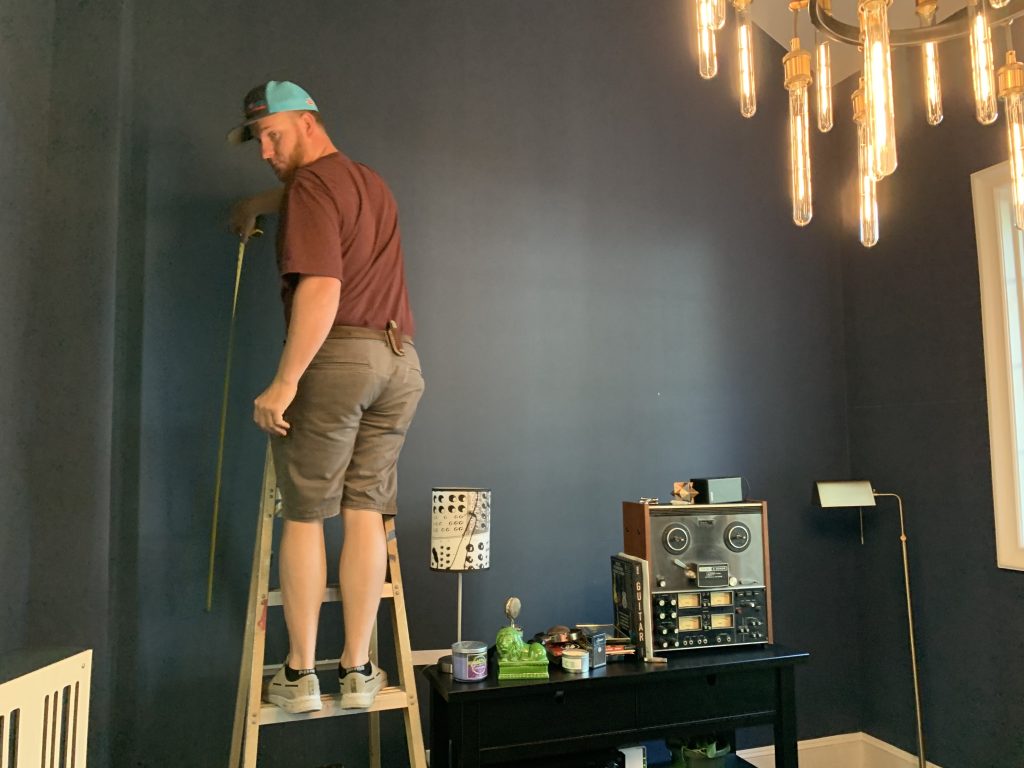
Jeff made this part immensely easy by providing precise measurements for placement.
One of the best features of these particular panels is they hang like (slightly heavier) wall art. If you approach this with the “measure twice, drill once” method, you’ll be installed in no time. GIK Acoustics provided multiple means for hanging, including rail hooks, wire, and eye hole screws. We went with the rail hooks as they hugged the wall closer, and we could mount them to the back of the frames consistently. After several hours, we were installed.
Paydirt
And just like that, after two years of planning, calculating, and re-planning, I had a treated room, a beautiful, balanced room… which we will show you on the next installment of our Demystifying Acoustic seri… OK, OK, OK! Put down the pitchforks. Here are some pics!
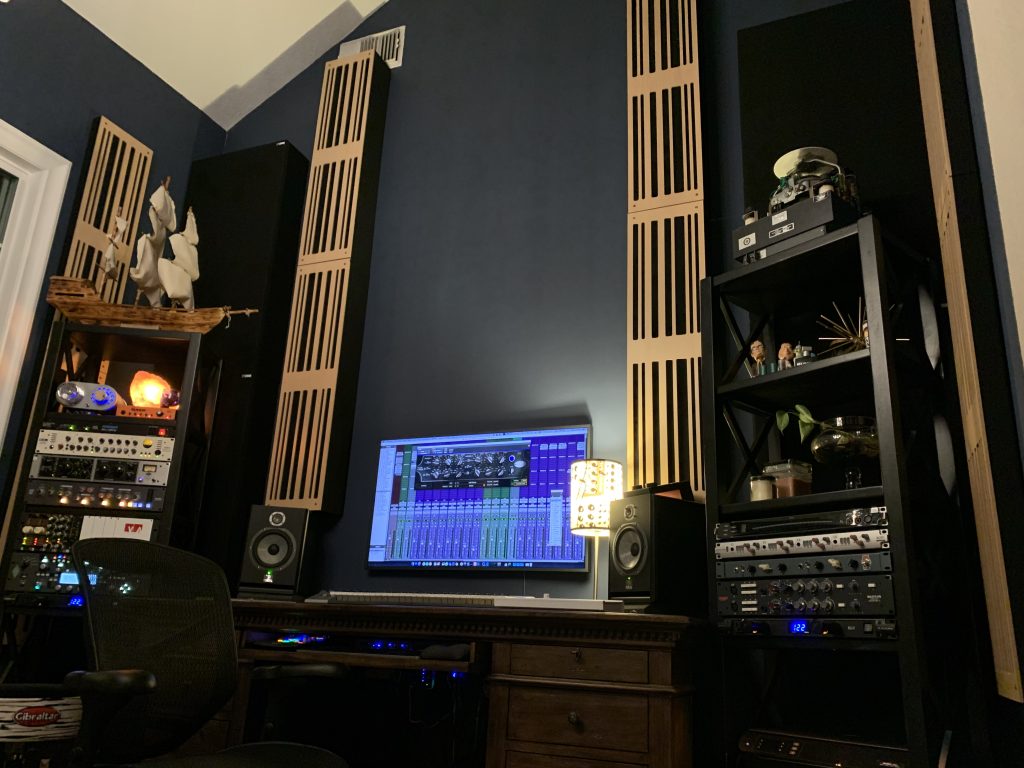
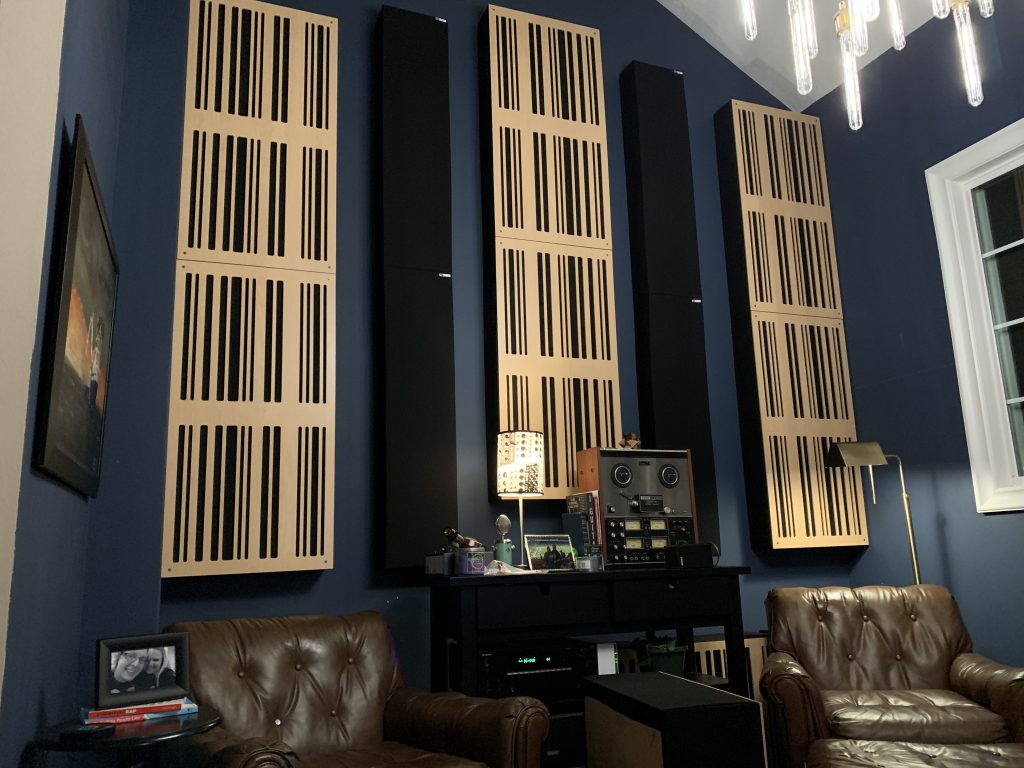
I couldn’t be happier with how this room turned out visually, but how does it stack up where it matters the most? Part 4 goes into the before and after analysis and overall sonic impressions of the room. Stay tuned!



